The Best Things to do in Lisbon in Winter – Month to Month Guide
Lisbon may be a popular destination for the mild, sunny weather that prevails most of the year, but Lisbon in winter can be fun, too.
Indeed, traveling Lisbon in the off-season will give you the best of the city: cheaper flights and accommodation, much less crowded and the sunniest and warmest weather in Europe in winter!
Now that you have decided to travel Lisbon in winter, you’re probably asking yourself “What to do in Lisbon at this time of the year?”
Let’s find out the best things to do Lisbon during the winter months!
What to do in Lisbon in December
December is a very nice month to be in Lisbon, especially because of the holiday season. The city is all enlighten and filled with Christmas and New Year spirit, which make December one of the best time to go to Lisbon.
Lisbon temperatures in December can vary between 9 and 15°C (48-59°F). It is the perfect time to stroll in the city while alternating with indoor activities to warm up!
Wondering what to do in Lisbon in December? Read on to find the best things to do in Lisbon in December.
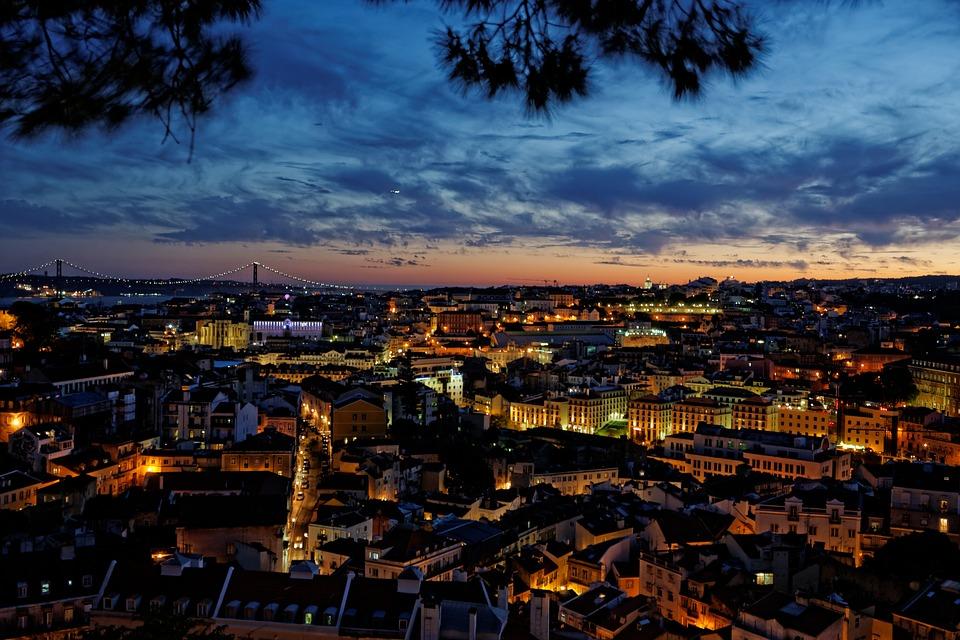
Hang out in Lisbon Christmas Market
Christmas in Portugal is a huge feast especially because most Portuguese people are Catholic. As many other European countries, Christmas markets pop up all over Lisbon from mid-November until the beginning of January.
Lisbon Christmas markets offer Portuguese traditional food you can only eat in Christmas, but also handmade trinkets and toys, and decorative and craft items.

Image by Rodrigo Argenton under CC0 1.0
Here are 3 of the most famous Christmas markets in Lisbon you should definitely visit on your Lisbon winter trip:
- Campo Pequeno: this is Lisbon main Christmas market with more than 100 exhibitors. Make sure to check the opening dates because it is usually held only for a weekend.
- Wonderland Parque Eduardo VII: you will find a lot of activities for kids in this market, as well as the usual Christmas stalls.
- Natalis: this one is the largest indoor Christmas markets in Lisbon as it takes place at FIL (Lisbon International Fair). As for Campo Pequeno, pay attention to the dates as it is opened only for a short time.
Visit the Maritime Museum Lisbon
– by Bec from Wyld Family Travel
There are so many things to see in Lisbon that you will not know where to start but one place that must be on your places to see is the Maritime Museum. Many people completely miss it as they think it is all about ‘just boats’ but we can assure you there is so much more to see.
The Portuguese sailors are well known for being some of the most adventurous sailors and well ahead of their time when it came to discoveries and here you can learn just how adventurous they were. The museum is spread out well with displays and artifacts left over from years gone by. You can learn about the different ways they documented their travels and exactly where they went!

There are so many beautiful exhibits that it’s hard to decide where to go first. I have to admit that there is so much to look at it may become a bit much but you must keep going until the end.
In the last large rooms there are full replicas of some of the styles of boats that were used. They are magnificent and the detail that is put into them is amazing.
So even after you’ve spent all day at Sintra or roaming the hilly streets of Lisbon in winter you can warm up here with a big dose of history!
Visit the Mercado de Campo de Ourique
– by Jonh Paul from The Hangry Backpacker
When the sun and warm weather in Lisbon make way for cooler temperatures and rain, my appetite leads me indoors. More specifically, I start looking for good, local places to chow down.
Lisbon has an abundance of good food, but there’s only one place to go when I’m indecisive, looking for a lot of options and the weather is less than pleasant. Mercado de Campo de Ourique (Campo de Ourique Food Market) is a great place to spend some time on a winter day in Lisbon.
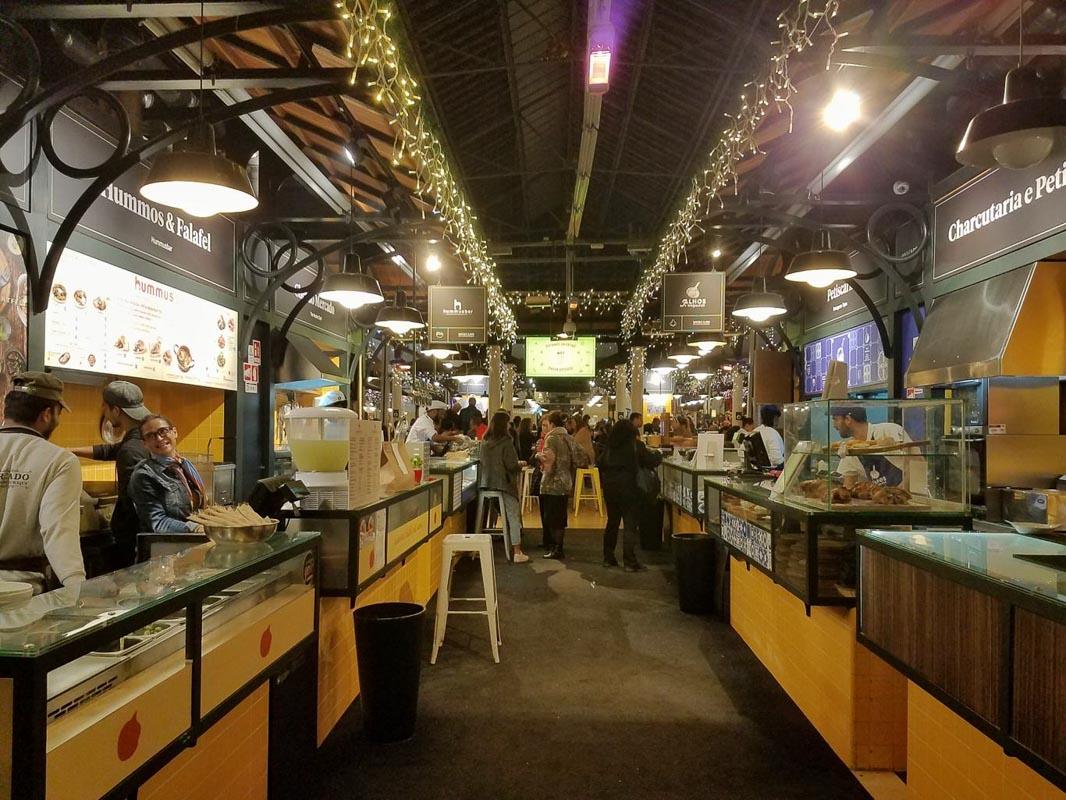
Campo de Ourique Food Market is a local experience. Most tourists in Lisbon stick to the popular tourist areas, and there are rarely any other tourists at this food market.
There are several options ranging from fresh produce, piri piri, fish, sandwiches, charcuterie plates and more. When I eat here, I grab a drink to go with my food and find a table in the middle of the market. It’s a great place to relax and enjoy some Portuguese cuisine in a local Lisbon atmosphere.
I love to travel and experience local food scenes. This is one reason I don’t mind traveling in the offseason. The cooler season in Lisbon may have fewer warm and sunny days, but there’s always plenty to eat. Campo de Ourique Food Market is an easy choice for one of my favorite places to go in Lisbon during Winter.
What to do in Lisbon in January
Although the city enjoys a mild climate year-round, if you plan to visit Lisbon in January, the weather won’t be warm or hot. With temperatures varying between 8 to 15°C (46-59°F), January is the coldest month in Lisbon but still among the best in Europe for winter sun.
Lisbon in January is pretty relax and calm, a perfect destination to retrieve after the holiday season! Attractions are quieter and many hotels offer discounts at this time of the year.
Wondering what to do in Lisbon in January? Read on to find the best things to do in Lisbon in January.
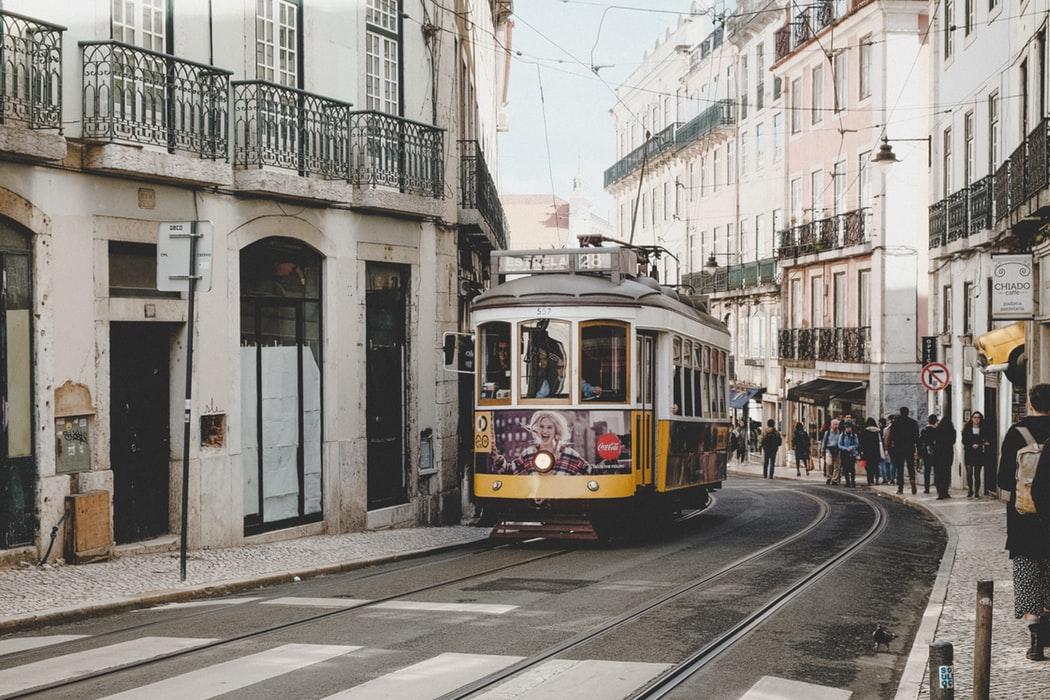
Hang out at LX Factory and enjoy one of the best terrace in Lisbon
– by Linda from La Dolce Fit Vita
There is no other quirkier place in Lisbon than LX Factory. Sitting right at the base of the bridge of the 25 de Abril (which will for a second make you think you’ve teleported to San Francisco), LX Factory is a place where vintage meets technology and where abandoned meets modernized.
Walking around the industrial complex it feels like walking through an art museum, each little shop or restaurant curated with such an attention to aesthetics, each one bearing a different theme.
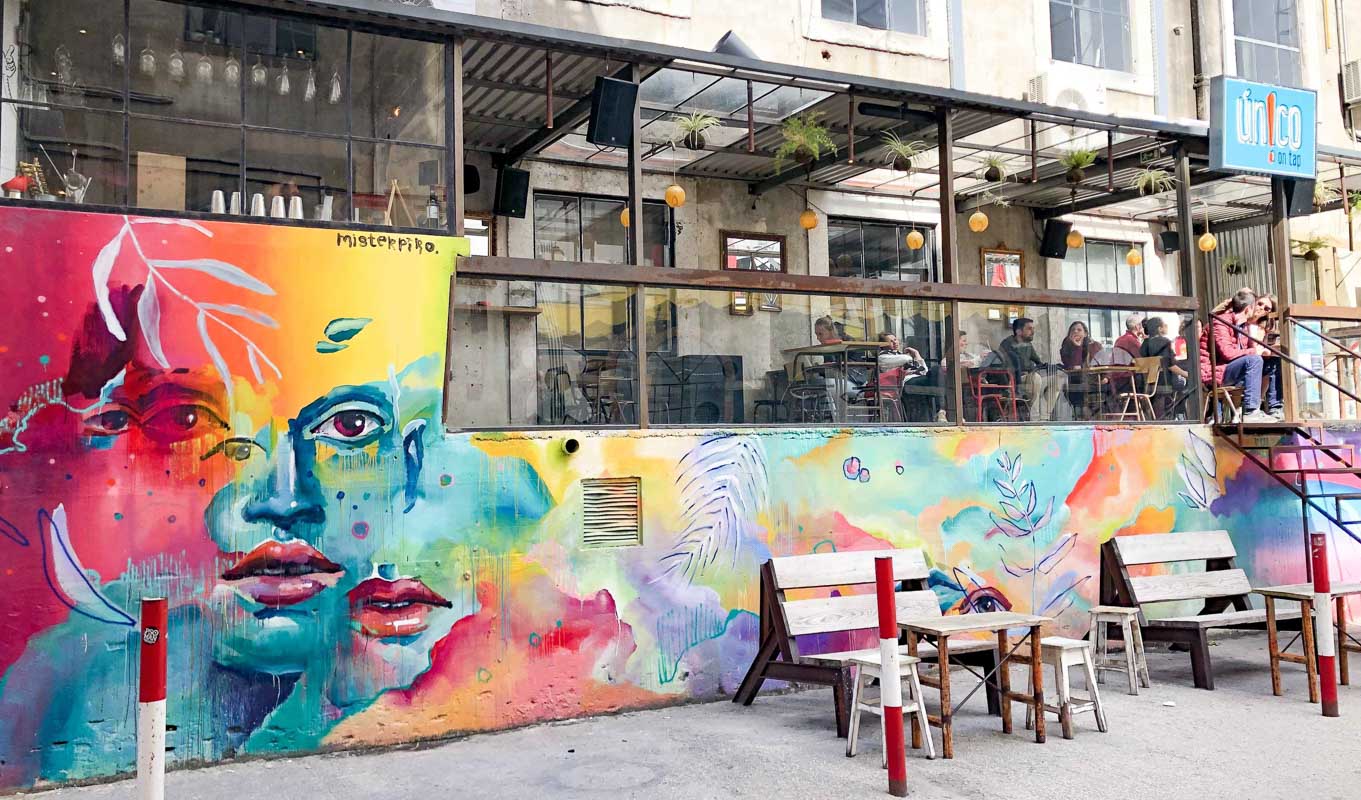
Escape the cold temperatures and get cozy inside Landeau, a café that serves everything chocolate! (Make sure to order their mouth-watering cake).
After you’ve satiated that sweet tooth, head over right next-door to the ultimate creative corner at Ler Devagar Bookshop. Here you can snuggle up in one of their lounge chairs and read one of the thousands of books stacked on ceiling-high bookshelves. (This is also a great photo spot!).

There are a handful of other fantastic bistrots and boutiques to scope out but make sure you check out Rio Maravilha. A bit hard to find, this formidable gastro-bar is located on the last floor of one of the buildings. As such, it has the cutest terrace overlooking the bay and bridge (if it’s too cold no worries, there is a huge window that overlooks the view as well). This is a great place for sunset drinks and probably one of the best views in all of town- don’t miss it!
Book a Lisbon food tour
– by Amber from Food And Drink Destinations
Lisbon is easily one of the most underrated culinary destinations in Europe. While food tourism to the Portuguese capital is increasing, Portuguese cuisine doesn’t receive the same accolades as other cuisines like French or Italian. One of the best ways to explore Portuguese cuisine is by booking a Lisbon food tour.
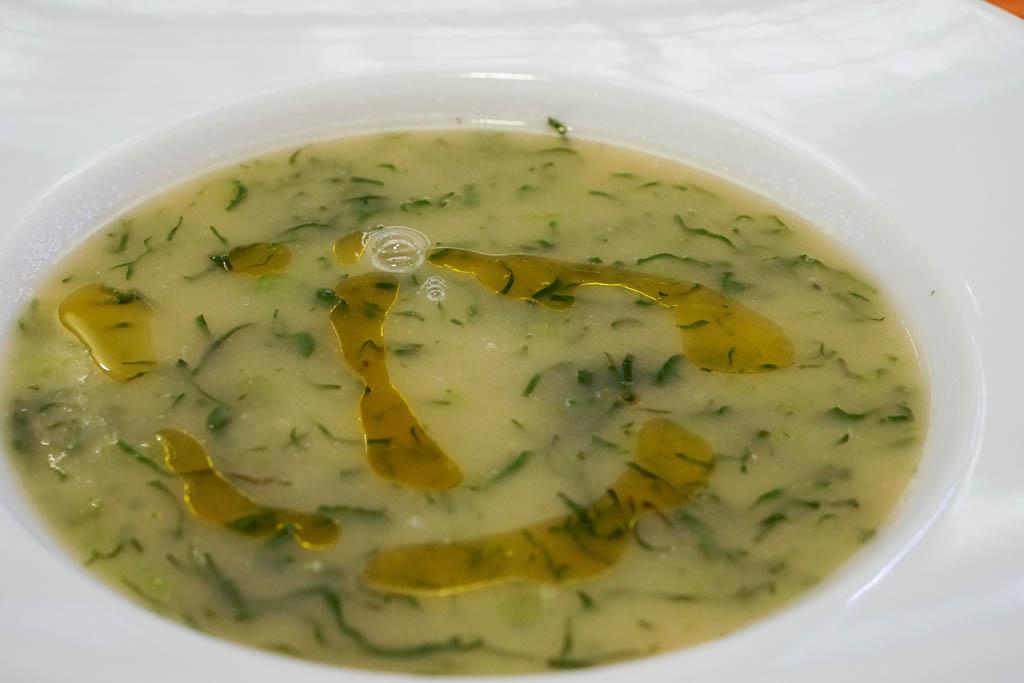
Thanks to its mild climate, Lisbon is a year-round destination. In the winter, the tourists crowds decrease significantly compared to the summer, making the city feel more local. It’s also common for many restaurants to close at some point during the summer.
In the winter, most of these restaurants are open and can be experienced on your own or even better on a food tour. With 14 different neighborhoods spread across Lisbon, it can be difficult to find the best places to eat. Thankfully there are a number of tour operators in Lisbon specializing in one neighborhood or featuring multiple neighborhoods during their tours.
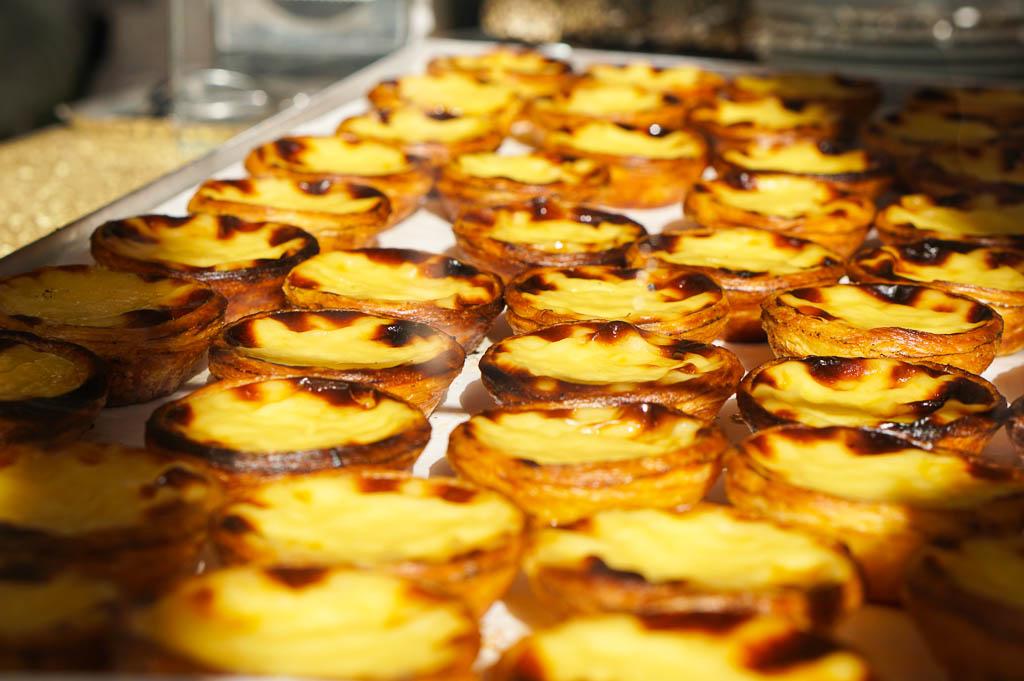
During the winter, one of the most popular dishes to enjoy is caldo verde soup. Although eaten year round, many say it’s best eaten in winter. A good food tour, which there are plenty, will certainly include a sampling of this classic Portuguese dish. Or, a food tour can take you to eat the classic Portuguese Pastel de Nata, hopefully while still warm!
While many might be looking to escape to sunny beach in winter, don’t discount Lisbon. With mild weather and incredible food, it’s well worth the visit, but make sure to come hungry.
Port wine tasting
– by Derek and Mike from Robe Trotting
We have spent a winter weekend in Lisbon and despite our concerns that we may have less to do at this time of the year – it was a blast! One of our favorite activities was the evening that we went port wine tasting.
Sure, Lisbon is known for fantastic seafood – but the Portuguese wine available in Lisbon is beyond compare. Port wines are typically a sweet, red wine served with dessert, but they also come in dry and white varieties. The grapes used to produce port wines are only grown in the Douro Valley of Northern Portugal. Hence, Lisbon is the perfect place for a tasting!

We tested our pallets at a port wine academy called Solar do Vinho do Porto in central Lisbon. The ambiance was intense and almost stuffy inside, but once we were seated and able to order, we quickly relaxed. The menus were large binders full of different port wines. This would have been intimidating if it wasn’t for our server. He was extremely knowledgable and was able to make great recommendations based on our individual tastes.
Now that we’re out of Lisbon, port wine is still reserved for after dessert. Still, it was fun to learn more about this uniquely Portuguese wine and take some knowledge home with us.
What to do in Lisbon in February
February is one of the best time to visit Lisbon Portugal. Indeed, the weather in Lisbon is getting warmer starting from this month: the average temperature is around 13°C (15°F) and days are sunnier.
As in January, February is an off-peak season month so there are much less tourists and activities and hotels are cheaper. It is the perfect setting for a romantic weekend in Lisbon!
Wondering what to do in Lisbon in February? Read on to find the best things to do in Lisbon in February.
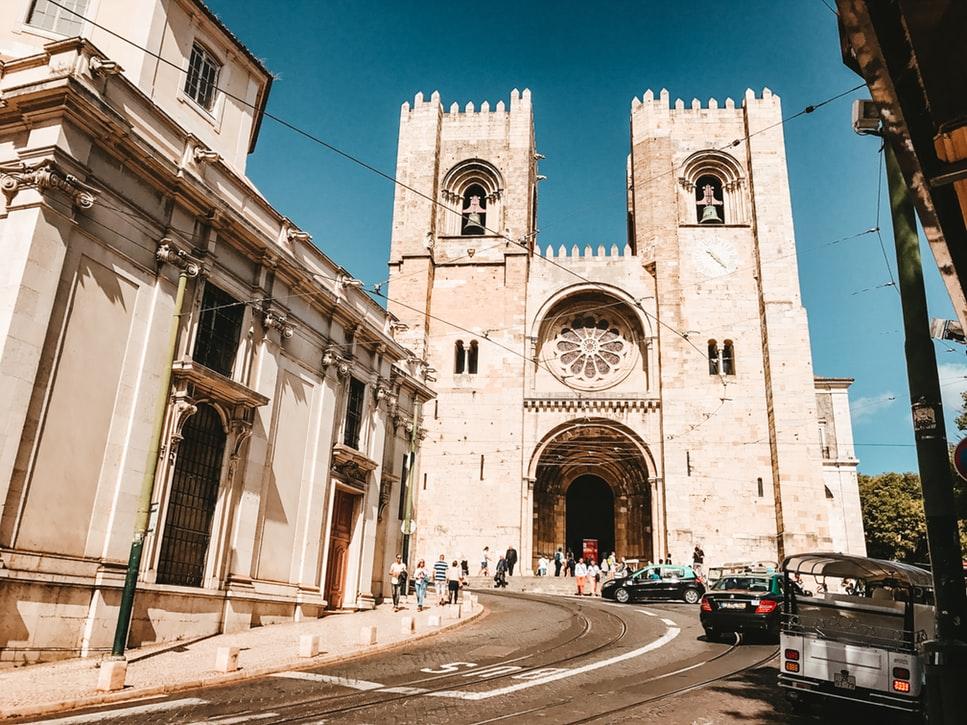
Watch a Fado performance in Alfama
– by Nina from Lemons and Luggage
One of the best things to do in Lisbon in winter is watching a Fado performance in the Alfama neighborhood.
Fado is a Portuguese music style that dates back to at least the 1820s. It perfectly captures the Portuguese emotion known as saudade, a nostalgic sense of longing for something or someone. As one of the birthplaces of Fado, the Alfama neighborhood is one of the best places to experience this beautiful tradition which the UNESCO named an Intangible Cultural Heritage.
Alfama is the oldest and most picturesque neighborhood of Lisbon and the only one to survive the 1755 earthquake. This quaint neighborhood almost feels like a village with its labyrinth of cobblestone alleys. You might easily get lost here physically, but you can also lose yourself in one of the fado performances. Alfama even has a Fado Museum so you could start your day there. Later, in the evening, you can then continue to the fado houses up the hill.
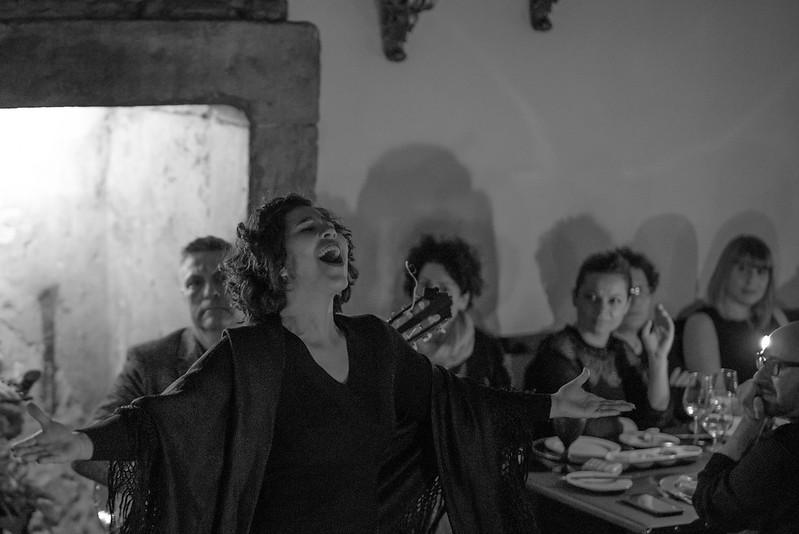
Image by Jimmy Baikovicius under CC BY-SA 2.0
There are fado spots for every traveler’s taste and budget. From full-on restaurants to tiny bars, from expensive menus to free shows. But no matter what you choose, the cozy atmosphere will warm your soul. I recommend fado vadio which is fado by amateur singers. These performances are usually free, and you only have to order a drink. Given the working-class origins of fado, this feels very authentic.
Of course, you can listen to fado during any season. But it’s even better when the weather matches the melancholic mood, making it one of the best things to do in Lisbon in winter.
Even if you don’t understand a single word of Portuguese, the hauntingly beautiful voices of the singers will make this an emotional experience to remember. Don’t leave Lisbon without a taste of the essence of Portugal.
Try out the delicious restaurants and bars of the Bairro Alto district
– by Ann Kelly from The Road is Life
The Bairro Alto district of Lisbon is home to a huge concentration of the trendiest restaurants and bars in the city. It is the place to be if you’re looking to enjoy a lively evening on the town and discover all the most delicious tapas in Lisbon.
If you’re looking for the most winter friendly activities to do in the evening during your stay in Lisbon, you can’t go wrong with exploring the popular eateries and bars of the Bairro Alto district!
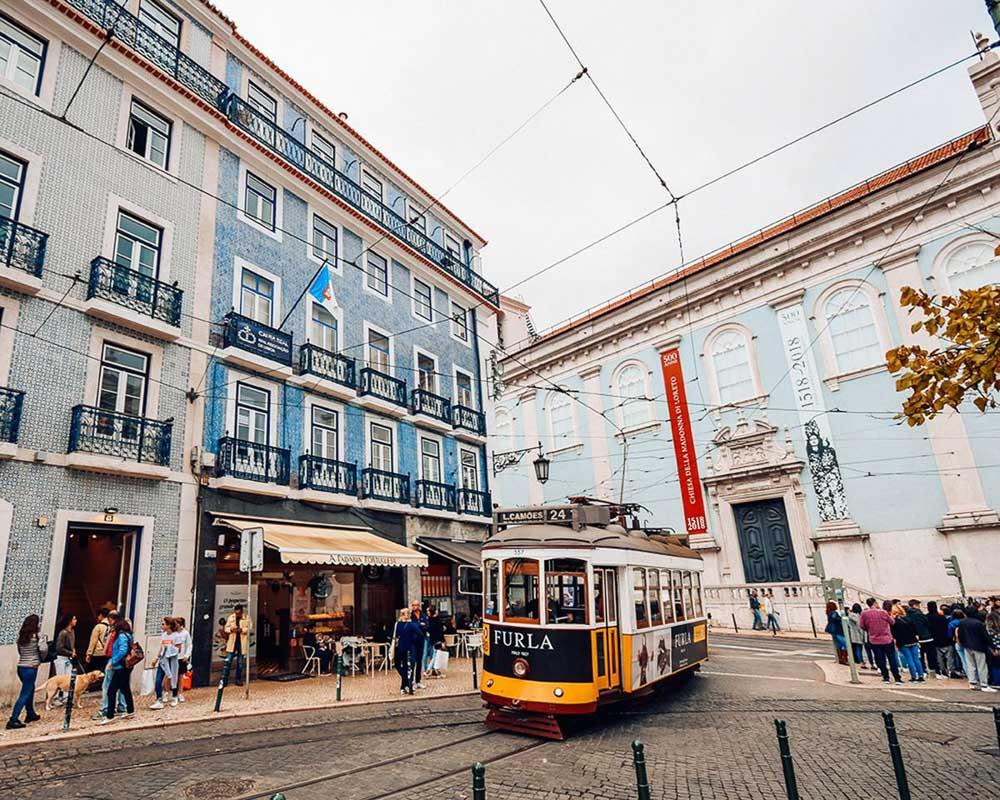
During the evening, the Bairro Alto district completely transforms into a vibrant and fun scene with music echoing through the streets and colourful streamers decorating the narrow alleys. The best thing to do is simply wander the streets and window shop until you see something you might like. The Bairro Alto District has a bar and restaurant to please everyone.
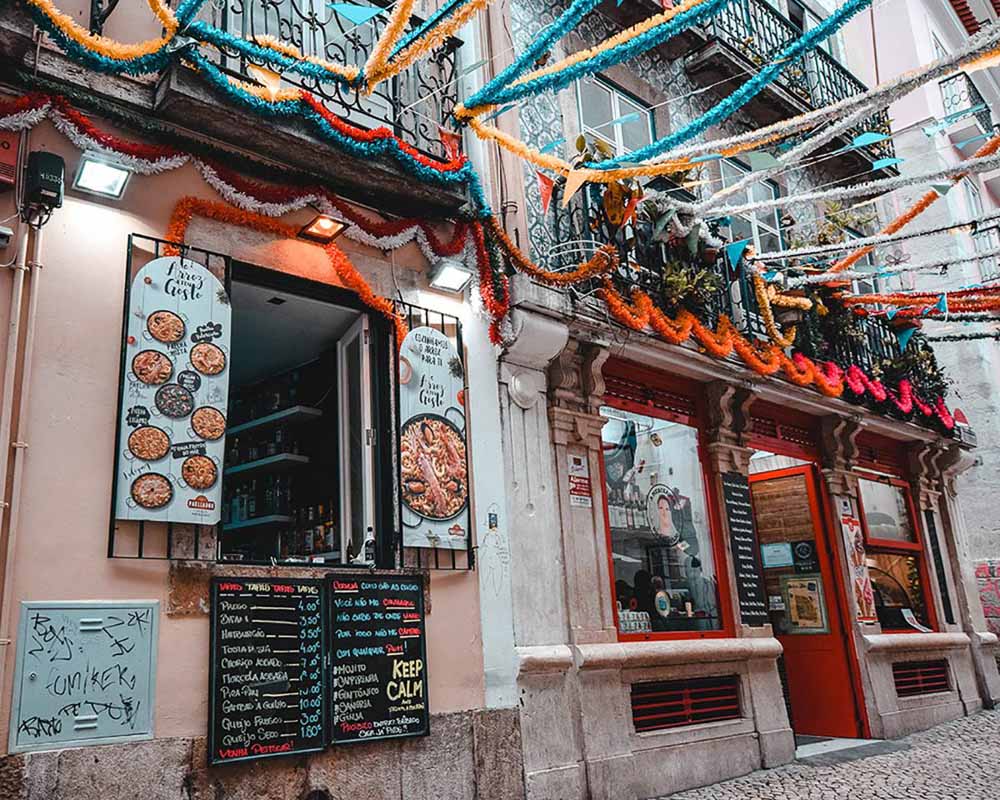
If you’re looking for recommendations for places to eat in the Bairro Alto district, you can’t go wrong with stopping at “Bairrices” for a delicious selection of tapas, seafood and wine. For a traditional Portuguese sit down restaurant, pop into “A Nossa Casa” for high quality dishes that won’t disappoint.
Have fun in Lisbon carnival
Portuguese Carnival is not as well know as the Brazilian or the Venetian one. But did you know the The Rio Carnival in Brazil was brought by the Portuguese? Indeed, carnivals was originally celebrated in European countries just before the Catholic Lent.
For centuries, carnival in Portugal is a huge event, full of music, dance, street parties, traditional costumes and food celebrated for Mardi Gras (Shrove Tuesday). Shrove Tuesday is usually celebrated in the end of February or in the beginning of March, so make sure to check the dates so you won’t miss it on your trip!
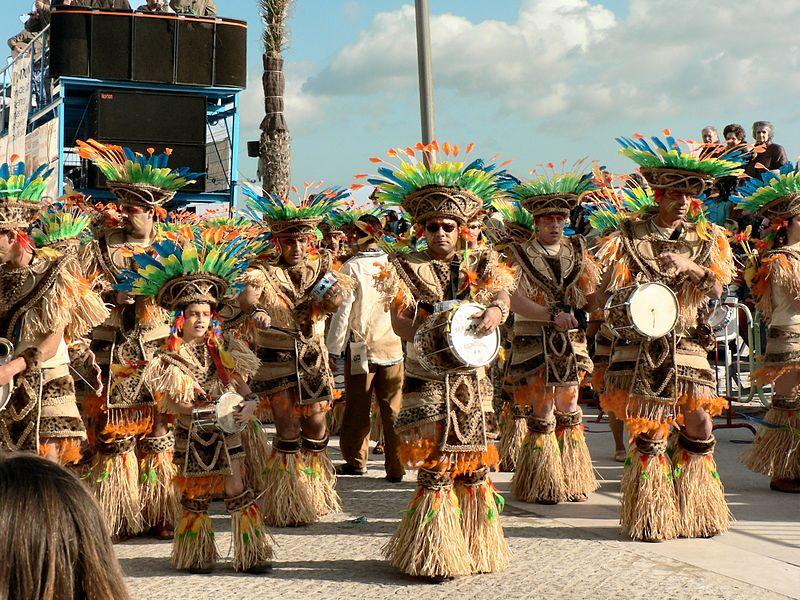
Image by Paulo Juntas under CC-by-sa-2.5
You can find a lot of carnivals in Portugal, all very different from traditional to more modern. Here are the most famous ones :
- Lisbon Carnival: the whole city becomes alive with parades, lights and live music everywhere. The heart of the carnival takes place in the center of the city, the Avenida da Liberdade, and in the Bairro Alto neighborhood.
- Torres Vedras Carnival: probably the biggest celebration in Portugal. Located at 50min drive from Lisbon, this carnival is more traditional and hosts more than 1 million people every year.
- Sesimbra Carnival: located at 50min drive from Lisbon, this carnival is a typical Brazilian carnival with samba dancers and Brazilian costumes.
Have a break at Time Out Market
– by Mansoureh from Travel with Mansoureh
Time Out Market is a must-visit when you are in Lisbon, this amazing food hall is a great place to have food and stay warm and dry on a cold and rainy winter day.
Time Out Market is located inside the historic Mercado da Ribeira in the Cais do Sodre waterfront district. There are over four dozen bars, restaurants, and cafes representing some of the best food, sweets and drink Lisbon has to offer, so there is no surprise this market is very popular amongst locals and tourists.
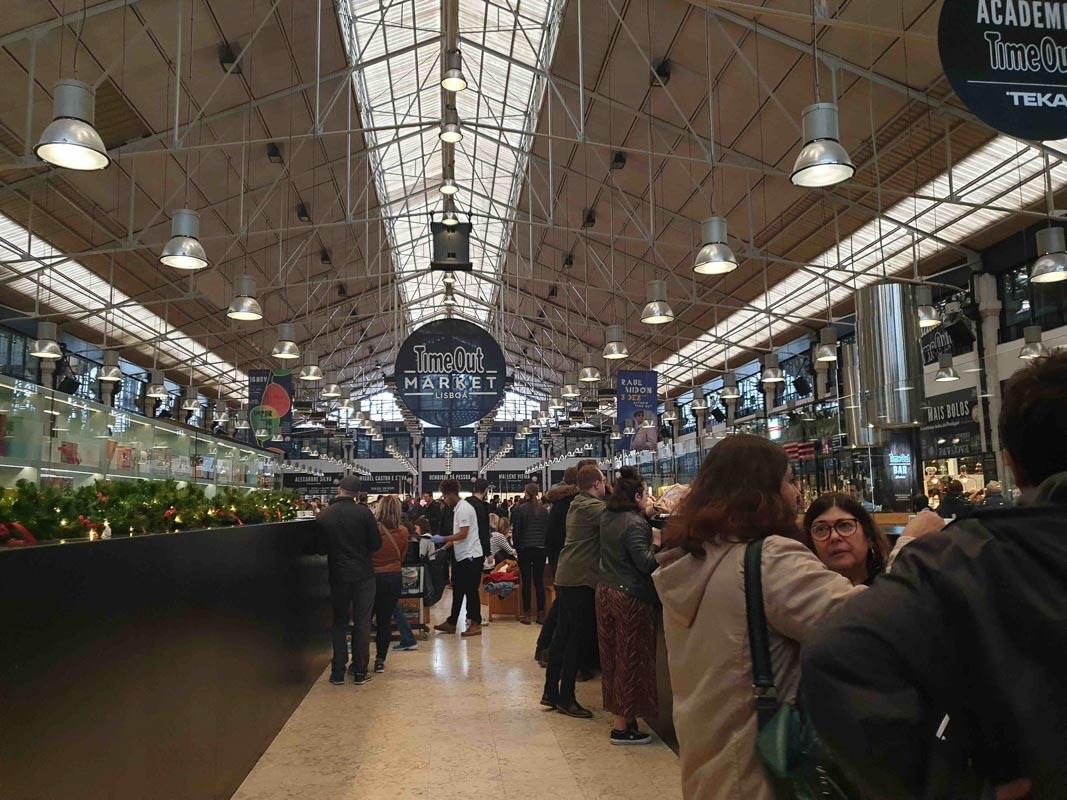
Make sure you are there when you are really hungry, so you will be able to try a variety of different dishes including marinated octopus, fried fish, steak, delicious salads, burgers and the best Pastel de Nata. This is the right place to have one of the best food experiences in Portugal.
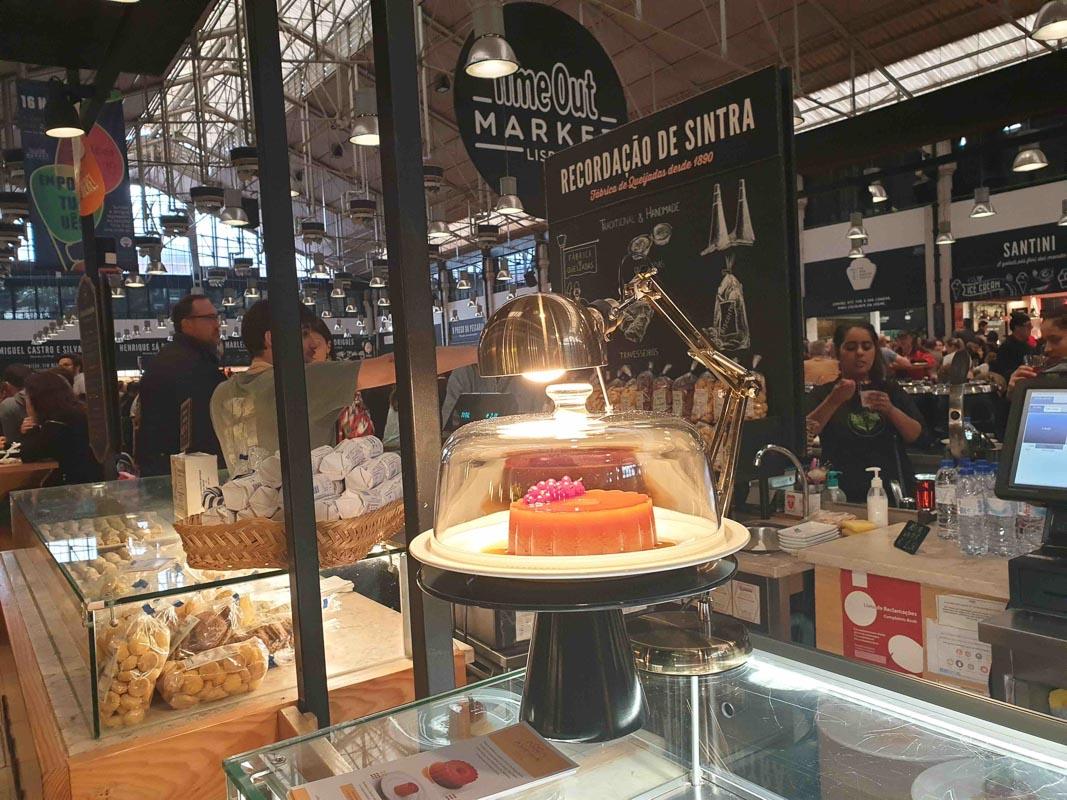
If you are going with your friends or family, make sure you don’t all order the same type of food so you can share. This way, you will be able to try different dishes without feeling too full at the end.
Popular food halls can get very crowded and it can be hard to find an empty table, especially for a group. I recommend you to go a little early, sometime before noon to be sure you can seat somewhere. The market is open every day between 10 am and 2 am.
What to do in Lisbon in March
March marks the start of spring in Lisbon! Forget about heavy winter clothes, weather in March is warmer and warmer with temperatures varying between 11 to 20°C (52-66°F).
With spring coming, days are longer, Lisbon streets becomes more alive and tourists are not flooding the city yet. March is definitely the best time to travel to Lisbon to enjoy the city by foot.
Wondering what to do in Lisbon in March? Read on to find the best things to do in Lisbon in March.
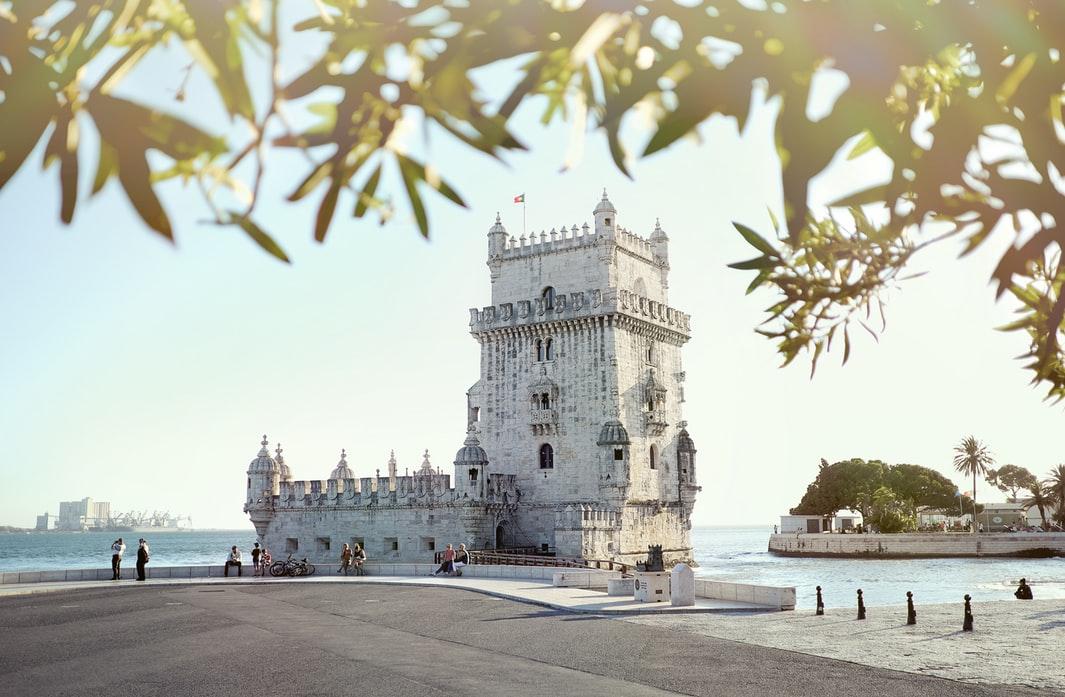
Watch the sunset in Lisbon
– by Giulia and Darek from Traveling Sunglasses
Even though Lisbon is absolutely magnificent during the day, kissed by the warm sun even during the winter, one of the benefits of shorter days are relatively early sunsets. Sunset can start as early as 18:00, which gives you plenty of time to enjoy the view, go back to the hotel, refresh, and leave again to discover the nightlife.
Lisbon is perfect for sunset-watching. Built on seven hills, it features a number of rooftop bars and restaurants, as well as several viewpoints called “miradouro”, which usually overlook city walls or parks, with a couple of benches to enjoy the view.
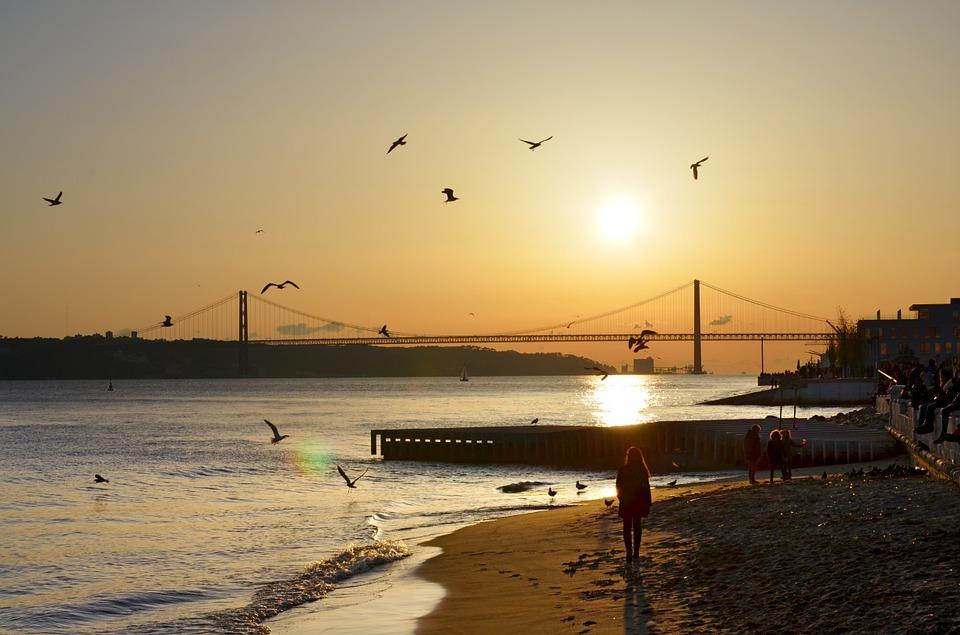
We loved the sunset from Park Bar, a famous and trendy rooftop bar located on top of a multi-storey car park in Bairro Alto neighbourhood. The red tiled-roofs lead your gaze towards 25th April bridge, right in front of the setting sun! It was really magical.
In general, if you aim for a rooftop bar, our first advice is to make sure it’s open: when we visited in January, we never actually made it to the bar, which was closed for renovations. Nonetheless, we still reached the top floor of the parking, and enjoyed the sunset with a few other people who were smart enough to bring beers from a supermarket.
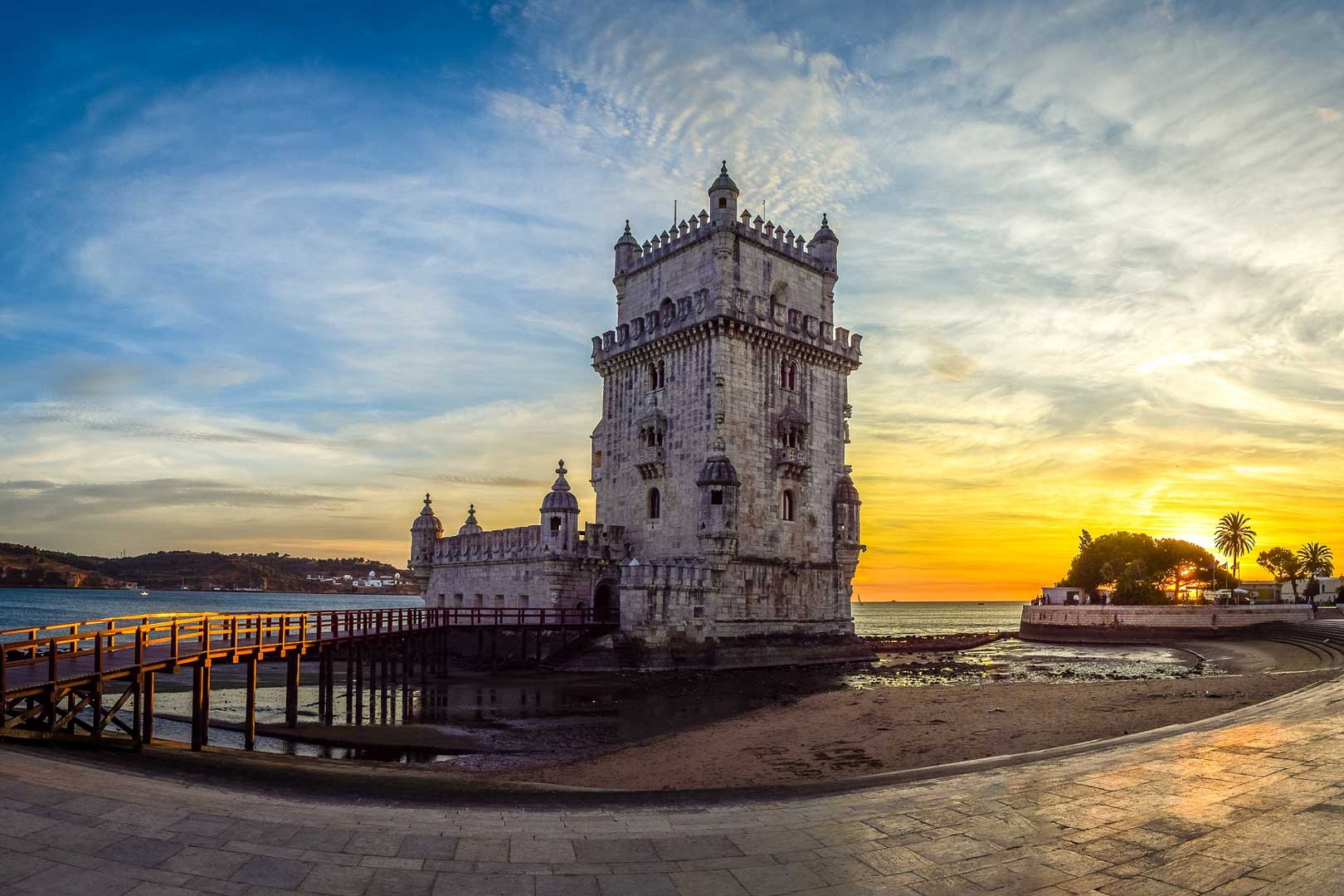
Head over to Graca neighbourhood to enjoy another fantastic sunset from the Miradouro da Graca (also called Miradouro Sophia de Mello Brenyer Andresen). The whole city centre of Baixa neighbourhood unfolds in front of you, including the Castle, until the glistening Tagus river and the elegant 25th April Bridge. After climbing up the hill until the viewpoint, the wonderful view feels even more rewarding!
Strolling over the Águas Livres Aqueduct
– by Iris from Mind of a Hitchhiker
Valley-spanning aqueducts have something magical about them. West of Lisbon’s city center, you’ll find the valley of Alcântara. While the bottom of the valley is now the location of a highway that’s part of the city’s ring road, there’s a majestic structure that nearly one kilometer long that crosses the valley: Aqueduto das Águas Livres—or the ‘Aqueduct of the free waters’.
This 18th-century arched bridge to solve Lisbon’s water scarcity problems survived the 1755 earthquake – one of the deadliest earthquakes in history. Still, standing atop the bridge from the 65-meter high pillar can be trippy enough without an earthquake.
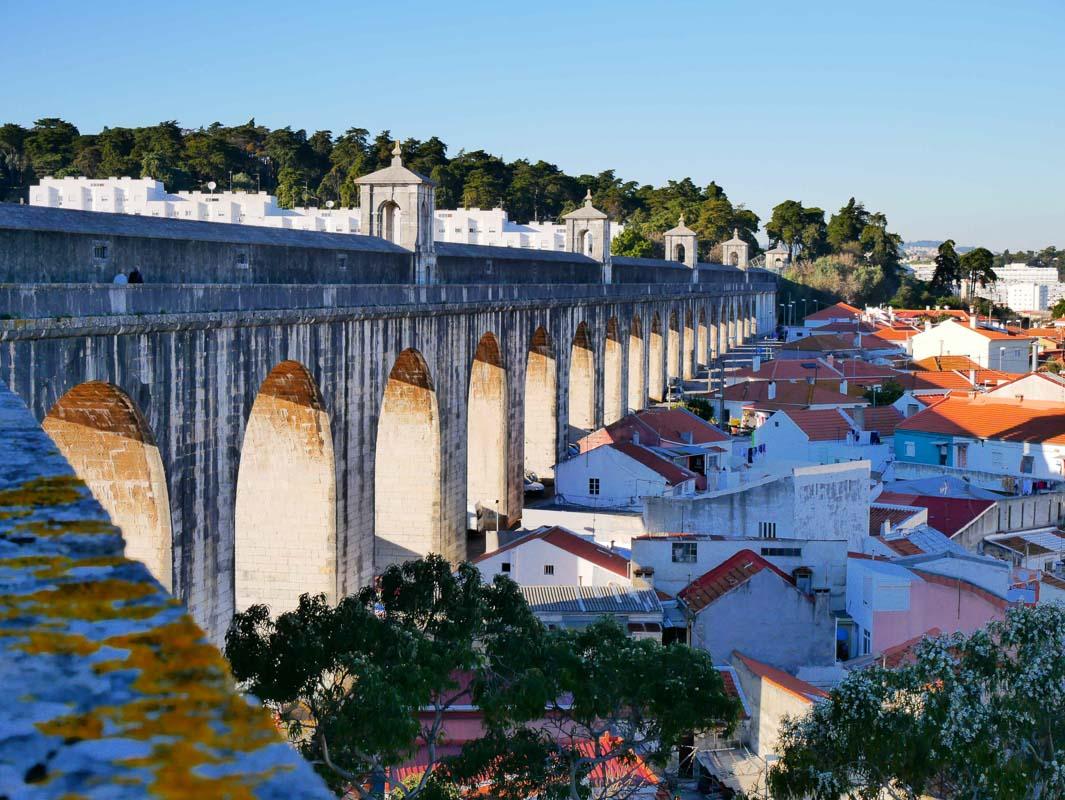
In winter, one side will be cool with shadow aplenty and vistas of the arches from the bend. The other side has the sunshine and the views of the Cristo Rei statue in the distance. The airplanes headed to Lisbon Portela Airport (LIS) cross the sky very closely. There’s a public passage about halfway on the bridge where you can see the inside of the aqueduct and hopefully a trickle of water.
The entry fee is €3 for adults and you can spend quite a lot of time strolling on both sides of the water contraption. If you haven’t seen enough, you can trace the watercourse all the way to the Mãe d’Água reservoir, which used to be the terminal station for the water before consumption.
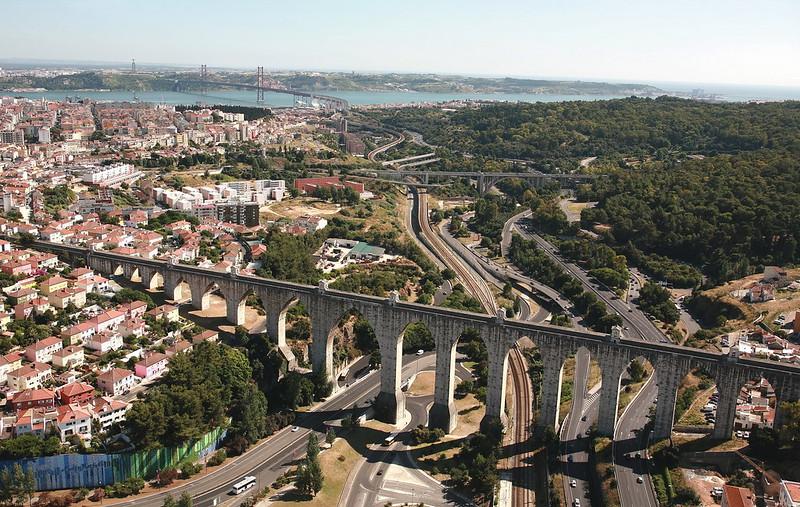
The most convenient neighborhood to visit the aqueduct from is Campo de Ourique, but it’s of course also possible to visit from Lisbon’s city center. You can combine a trip to the aqueduct with visiting the rooftop of the Amoreiras shopping mall or even all the way to the Torre de Belém if you start early.
A day trip to Alentejo
– by Campbell & Alya from Stingy Nomads
One of our favorite day-trips from Lisbon was a visit to Alentejo, a stunningly beautiful area about 160 km south of the Portuguese capital. It’s a perfect day or weekend escape from busy and noisy Lisbon.
The highlight of Alentejo is the famous Vicentina Coast that extends from a small town of Porto Covo through Alentejo and Algarve region to Cabo de St.Vicente – the south-westernmost point of Portugal and of mainland Europe.
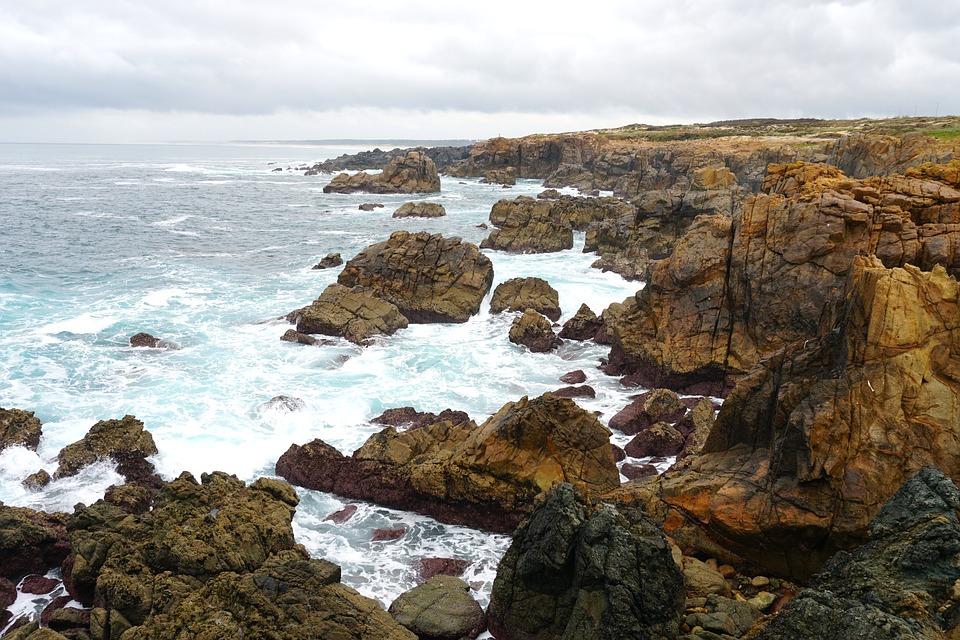
There are several walking trails along the cliffs and over the unspoiled sandy beaches, if you get tired from sitting in a car you can follow one of the trails that offer some spectacular views of the dramatic cliffs, hidden beaches, and the endless ocean. Don’t forget to stop for lunch at one of the fishermen’s villages along the way e.g. Porto Covo, Almograve, Zambujeira do Mar and Praia de Odeceixe.
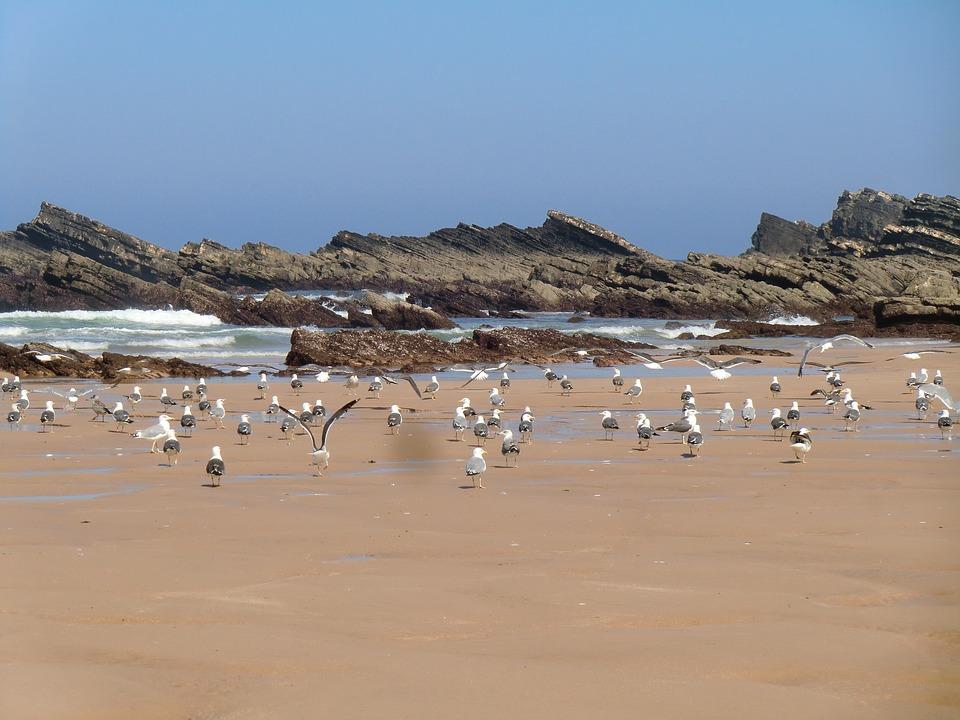
The coast gets quite busy in spring and summer but in winter there are not many people, it’s a perfect time to enjoy the tranquility and beauty of the area.
The best way to explore the coast is to rent a car in Lisbon, drive down to Sines from there follow the coastal road, stopping at several lookouts to enjoy the view. It’s possible to get here by public transport from Lisbon there are several daily buses that depart from Sete Rios bus station towards the coast and make several stops along the way.
Pastéis de Nata Cooking Class
– by Wendy from The Nomadic Vegan
Portugal is famous for its pastries, and the most famous ones of all are the Portuguese egg custard tarts, known as Pastéis de Nata in Portuguese.
A local company called Foodie Bookings offers cooking class workshops where you can learn to make these scrumptious treats yourself. And then you get to eat them too, of course! A cup of tea and a Pastel de Nata straight out of the oven is the perfect way to warm up on a cold winter’s day.
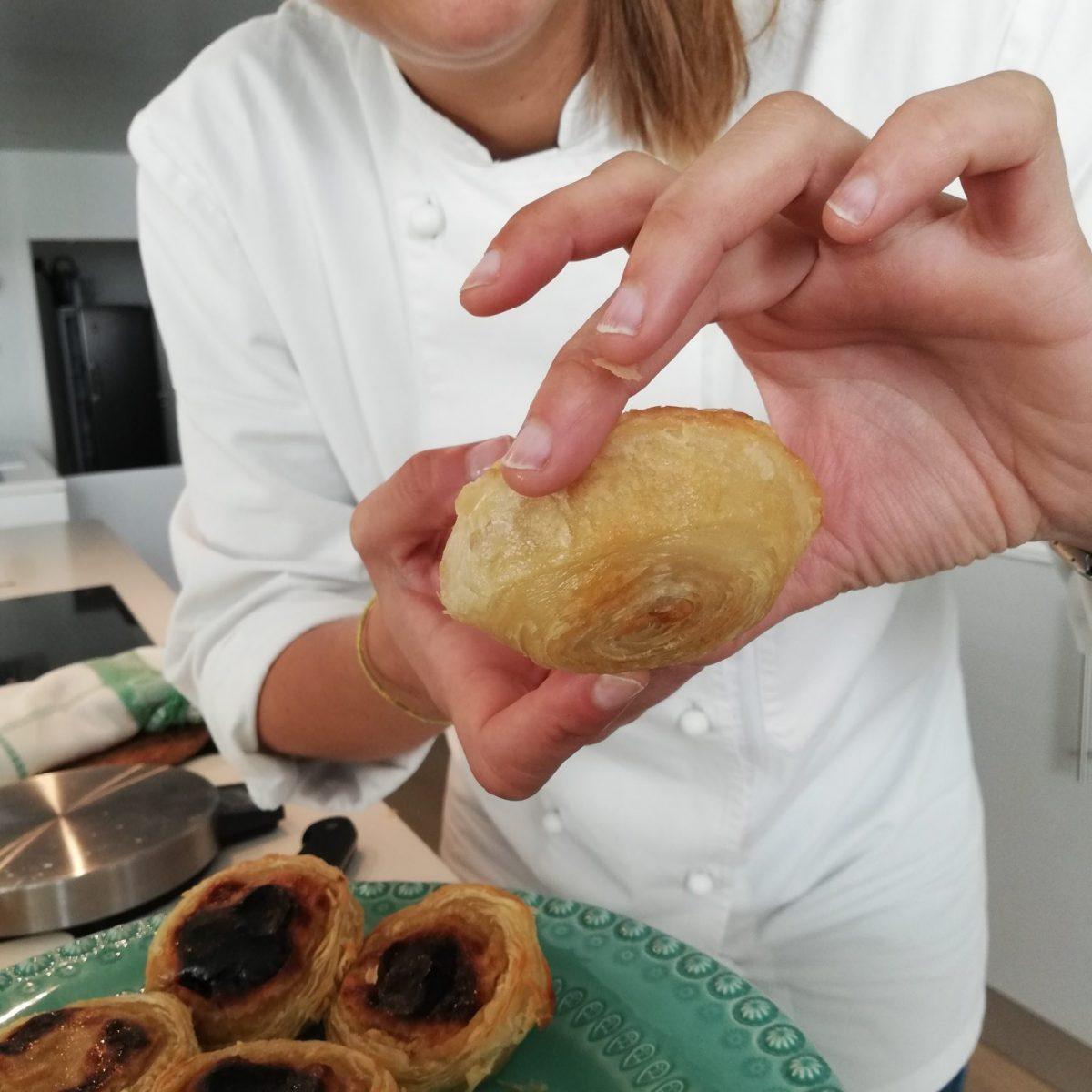
The instructor, Ana, is a trained Portuguese chef who hosts the workshops in a beautiful space in the heart of Lisbon. One thing that’s really unique about Ana’s workshops is that, in addition to the traditional recipe for Portuguese egg custard tarts, which of course includes eggs and dairy-based custard, she also offers a completely vegan version of the experience!

Pastel de Nata is not the easiest dish to veganize, so I wasn’t sure how it would turn out, but I was completely blown away when Ana and I made them together. It’s a great option not only for vegans but also for anyone allergic to dairy or eggs.
This is one of the best foodie experiences I’ve had in Lisbon! At the end of the workshop, you will receive the recipe written out with detailed instructions, so that you can make more Pastéis de Nata when you’re back at home and impress your family and friends.
Visit Portugal
Ready to go on a trip to Portugal in winter? Find below other helpful articles about Portugal to plan your trip:
Portugal Guides:
Best Itineraries for Your Trip to Lisbon
The 20 best cities in Portugal
6 Best Things to See in Sintra
Where to stay in Lisbon
Looking for an accommodation for your trip to Lisbon? Find below recommended hotels depending on your budget and travel style.
Budget: Host Bell Rooms and Suites
Very cheap accommodation, around 14€ per night for a bed in a 12 beds dorm room.
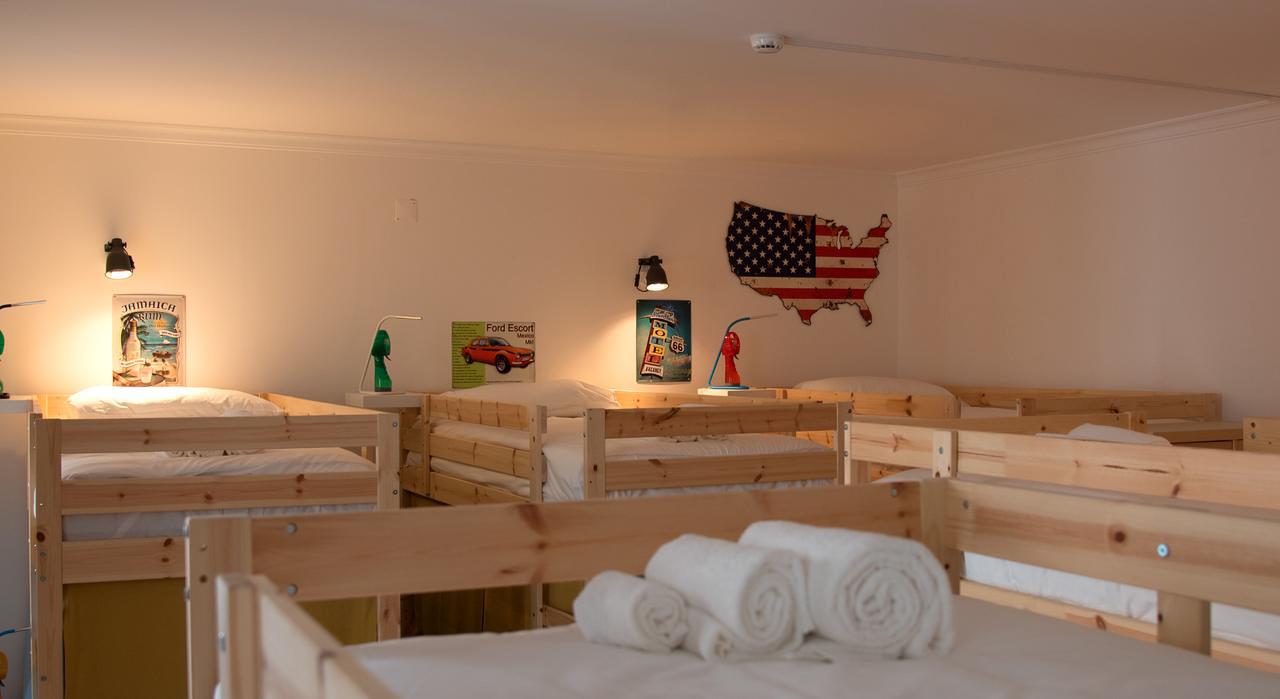
This hostel has the best location, it’s right next to the main square, and everything is within walking distance. There’s also tea and coffee machines in every room, which is a big plus.
Comfy: Lost Lisbon: Avenida House
Very comfy rooms, with private bathroom, for around 78€ per night.
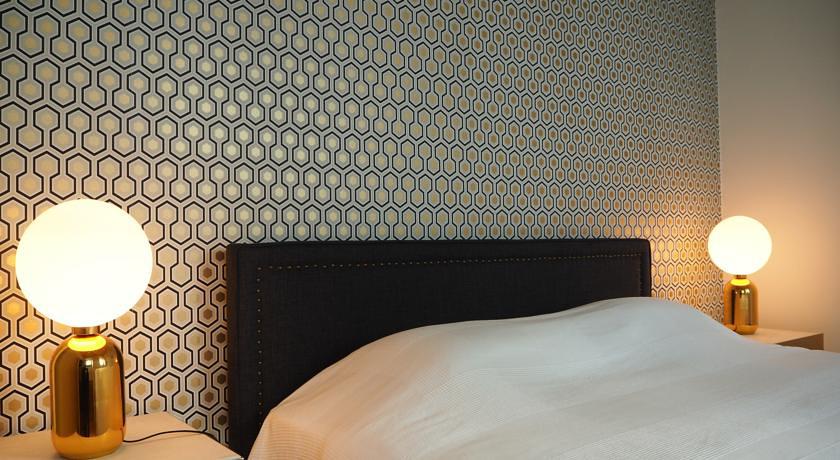
The two nice bonuses? It’s within walking distance of the city center, and it also comes with a free breakfast!
Luxury: The One Palacio da Anunciada
If you’re looking for the perfect dreamy place to relax and enjoy your stay in Lisbon, look no further.
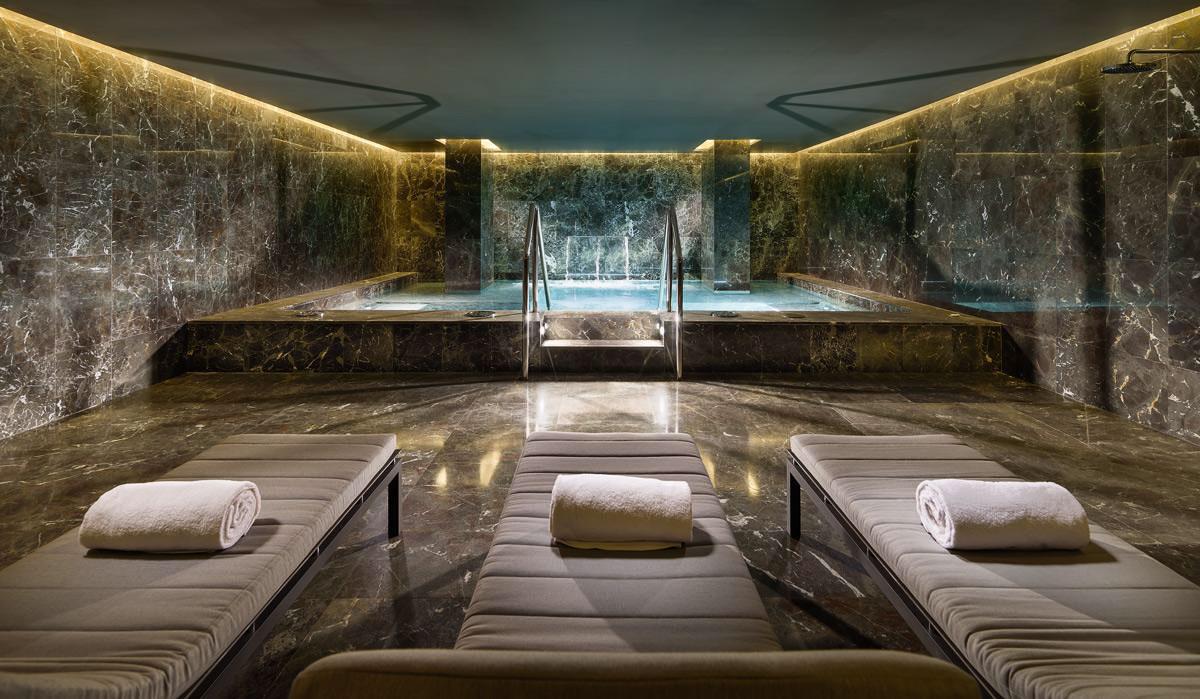
The One Palacio da Anunciada might very well be your favorite place in the city; private bathroom, outdoor swimming pool, fitness center, indoor pool and even a sauna! It also has breakfast included, and its location is hard to beat.
I hope you will enjoy your winter trip to Lisbon! If you have any questions or if you have tried one of the experiences recommended in this article, let me know in the comments below!
Travel Tools
Use any of our recommended links below to book your trip. You pay the same, and we earn a small fee; a great way to support us!
Pin this to Pinterest!
Enjoyed this guide? Then help a fellow traveler and pin it! They'll most definitely love you for it, 100% guarantee.


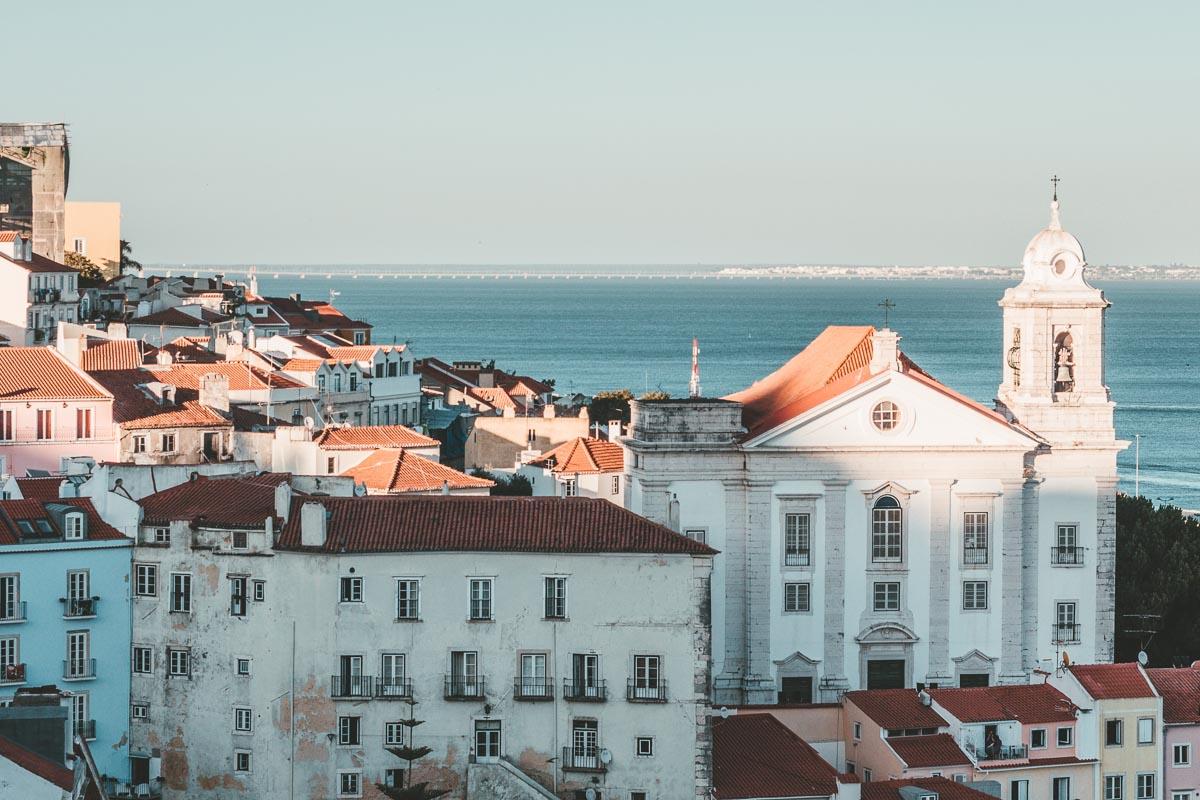
![[Reviews] The 19 Best Hotels in Lisbon Portugal – For ALL Budgets!](https://www.kevmrc.com/wp-content/uploads/2021/05/the-19-best-hotels-in-lisbon-portugal.jpg)

So many amazing suggestions in this! Lisbon is definitely a fantastic place to visit in winter.
Right on, thanks again for sharing with us your favorite thing to do in the city when it’s a little bit colder outside! 🙂